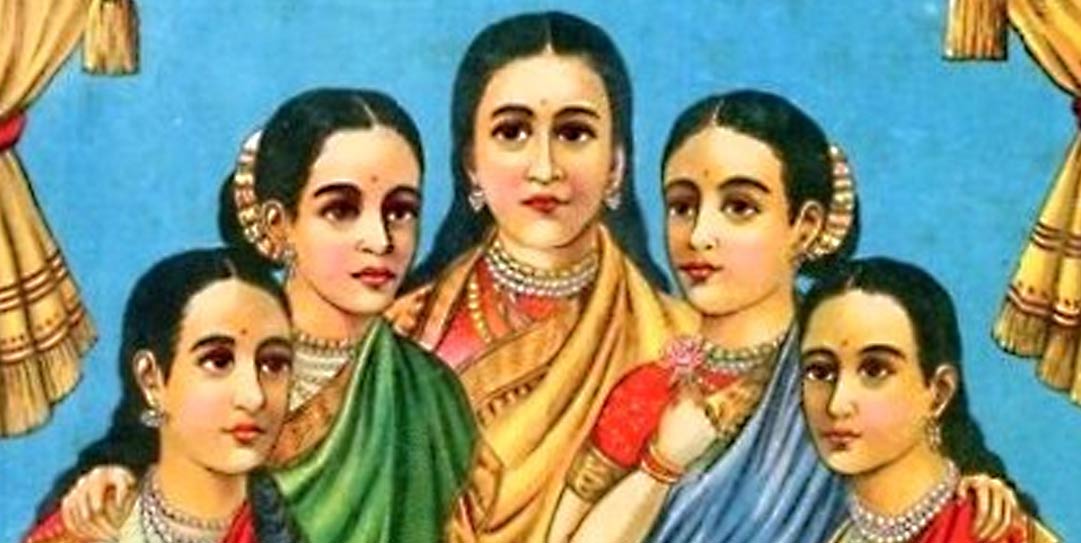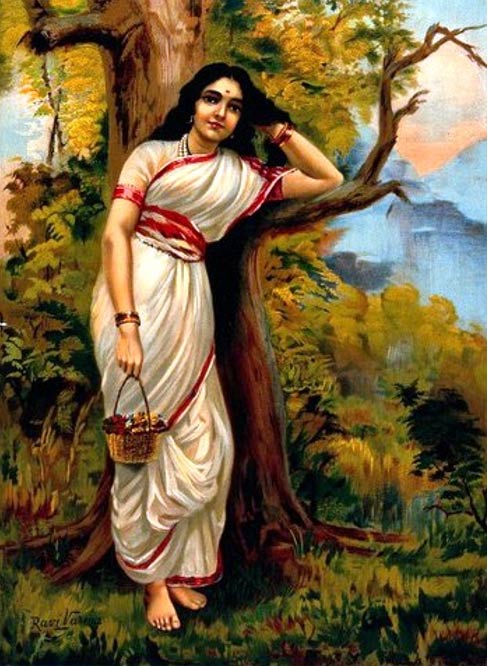
The Legends of the Panchakanya - The Five Virgins of Ancient India
The Panchakanya (the five virgins) are female characters in the two great epics of India, Ramayana and Mahabharata. Each of them is described as extraordinarily beautiful and virtuous. The literal meaning of 'kanya' means ‘girl’, ‘maiden’ or 'virgin'. Although the five women are all married, sometimes with multiple men, this was the word chosen to depict them instead of the word nari (woman) or sati (chaste wife), which was then questioned by scholars. However, the word was chosen because tradition says that the purity of their characters are so strong, that nothing could corrupt their spiritual powers. In fact, their very names are believed to ensure salvation and freedom from evil. It is not uncommon, therefore, for devout Hindu to recite their names each morning to remind them of the power they symbolized.
The chant is sung like this: Ahalya Draupadi Sita,Tara Mandodari tatha, Pancha kanya smarenityam, maha pataka nashanam, which means "Mediating on the merits of the five great virgins, namely Ahalya, Draupadi, Sita, Tara and Mandodari, helps destroy even the greatest of sins”
The Five Forms
The Panchakanya are Ahalya, Draupadi, Sita, Tara and Mandodari. In a lot of traditions, Sita is replaced with Kunti as the third lady of the Panchakanya. Ahalya, Tara, Mandodari and Sita are from Ramayana, while Kunti and Draupadi are from Mahabharata. Although Kunti and Sita are interchangeable, to keep the formation of the five virgins, they would never appear together as they represent the same natural element, which is earth.
Five is one of the mystical numbers according to Hindu belief. There are five ingredients prescribed for worship: wine, fish, flesh, lard and chant, corresponding to the five senses in the human body: taste, smell, sight, touch and hearing. It is also believed that nature manifests itself in five forms: earth, water, fire, wind and sky. Each kanya is born of one of these elements, and these five elements of nature formed the essence of their characters.
The Five Legendary Ladies
The first kanya is Ahalya, who was born of water. Brahma created her from all things beautiful, to be the symbol and carrier of beauty.

Ahalya leaning on tree. (Public Domain)
Ahalya was placed in the care of the elderly sage Gautama until her puberty. She was then given by Brahma as a wife to Gautama, to whom she was devoted. After marrying Gautama, Ahalya settled into his hermitage in a forest near Mithila, where the couple practiced asceticism together. But, Indra, the king of the heavens, wanted her for himself.
One night, as Gautama and Ahalya lay sleeping, Indra disguised himself as a cock and crowed. Gautama thought it was dawn and went for his meditation near the river. Indra then disguised himself as Gautama himself, and ravished Ahalya. Gautama, on his way to the river, became aware of the deed, and at once returned to his hermitage. In his rage, he cursed Indra to lose his testicles. Ahalya, whose only sin was of surrendering herself to the one she thought to be her husband, was also cursed. Gautama cursed Ahalya to remain invisible to all beings for thousands of years, to fast by surviving only on air, to sleep in ashes and to be tormented by guilt. As Ahalya was starting to fade, Gautama abandoned her to go to the Himalayas. Thousands of years later, the God-King Rama, seventh reincarnation of Vishnu, passed Gautama's desolate hermitage while traveling to the court of king Janaka in Mithila. As they neared the hermitage, his teacher Vishvamitra recounted the tale of Ahalya's curse. Vishvamitra described her as goddess-like and illustrious. Rama and his companions felt her presence, as instead of slipping away to cry over her dishonor, she stood firm, staying in the very ashram where she was shamed and carrying on her good work despite her lack of physical presence and society’s censor. Due to her patience and the intensity of her ascetic devotion, Ahalya was described as glowing, but hidden from the world like the sun obscured by dark clouds.
- Jauhar - The History of Collective Self Immolation during War in India
- The Rise of Chandragupta Maurya, and the Golden Age of the Mauryan Empire
- The Sacred Three in Asian Beliefs: Triple Gods, Tridevi, and the Three Treasures
Rama then entered the ashram to see Ahalya, who, up till then, had been hidden from the universe. Rama came to her side and declared her blameless in this incidence. In the end, Gautama came back to her.




